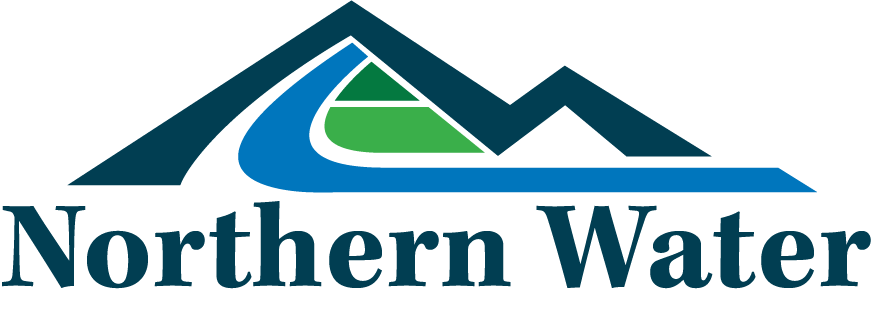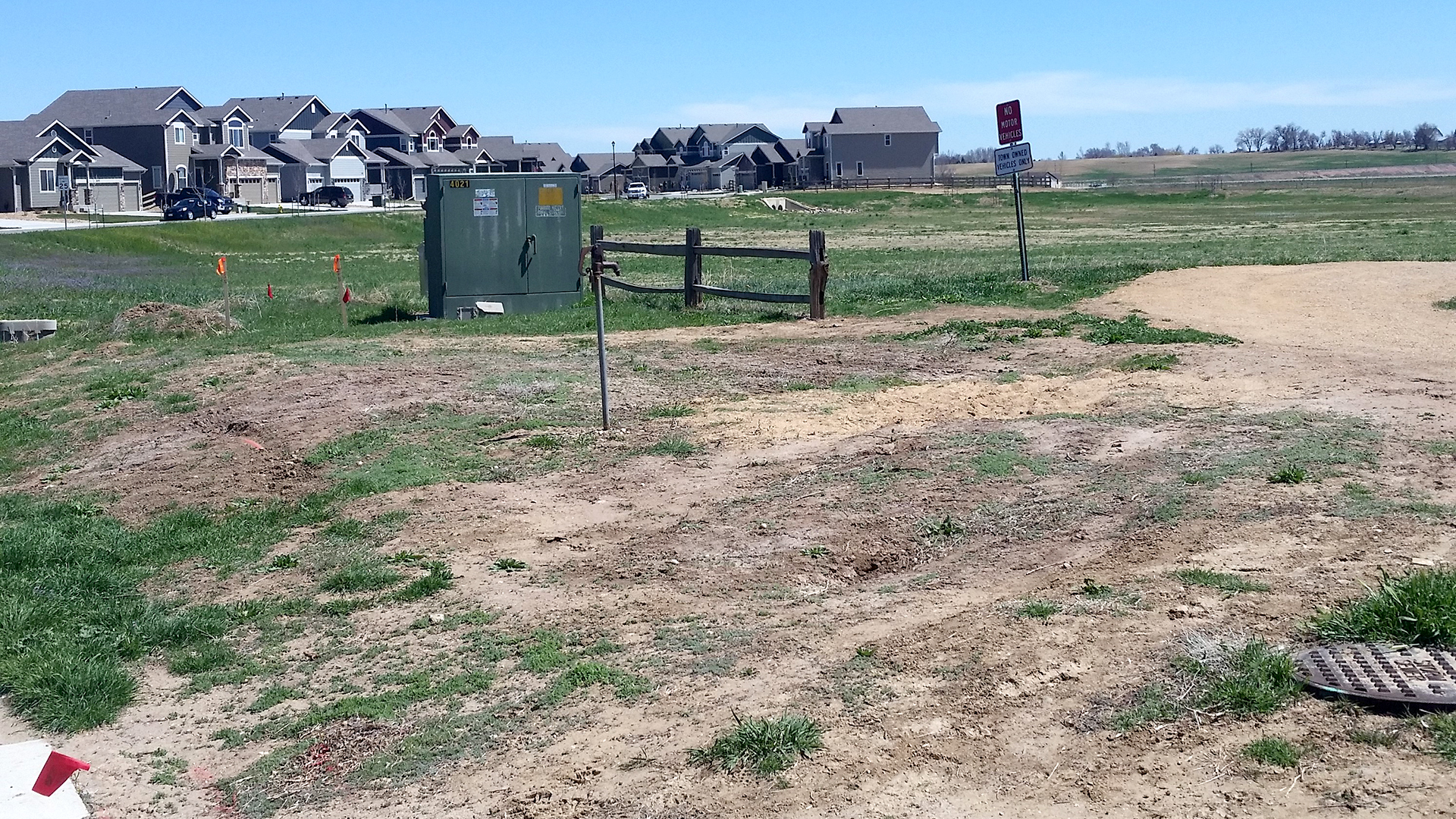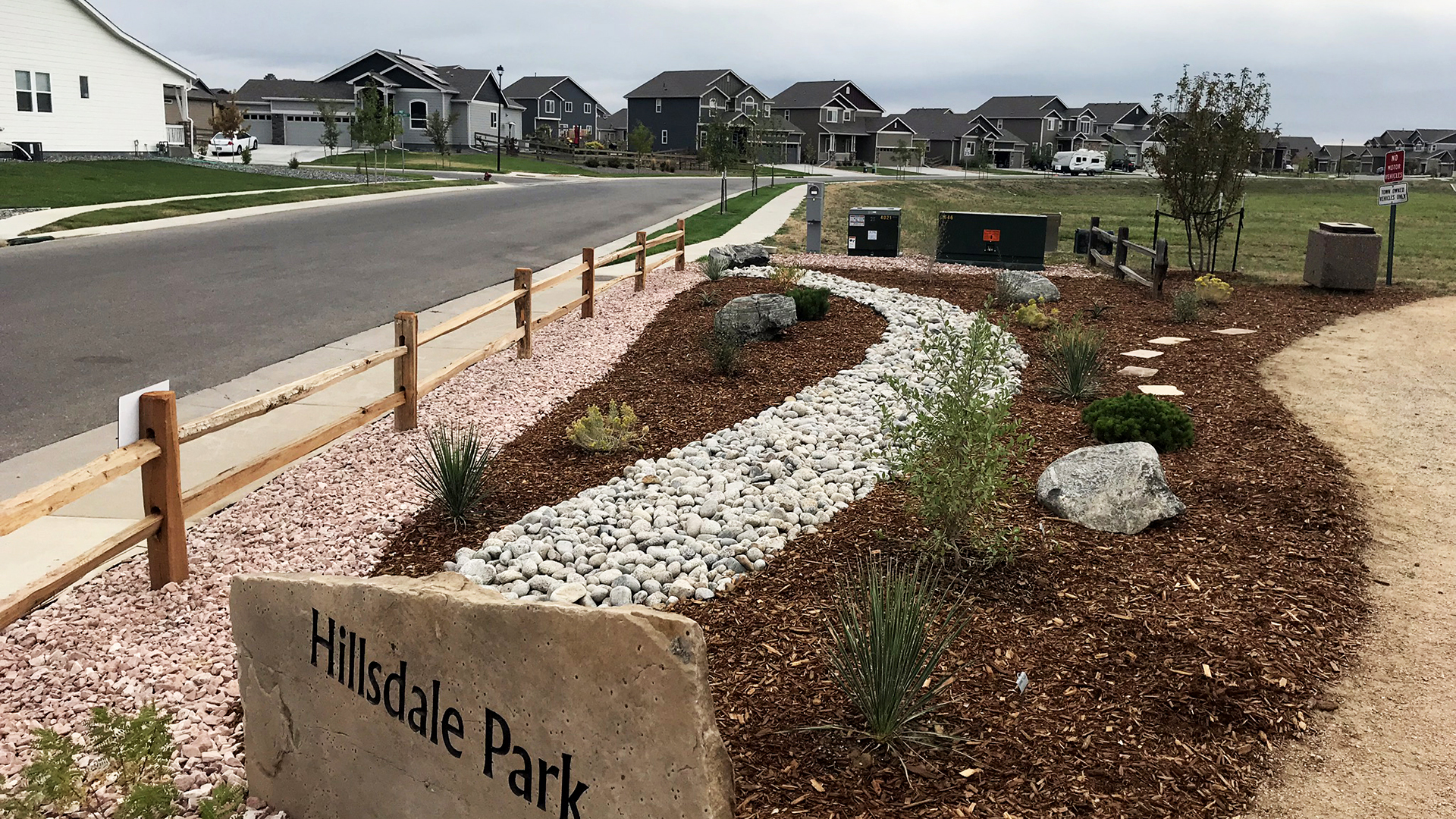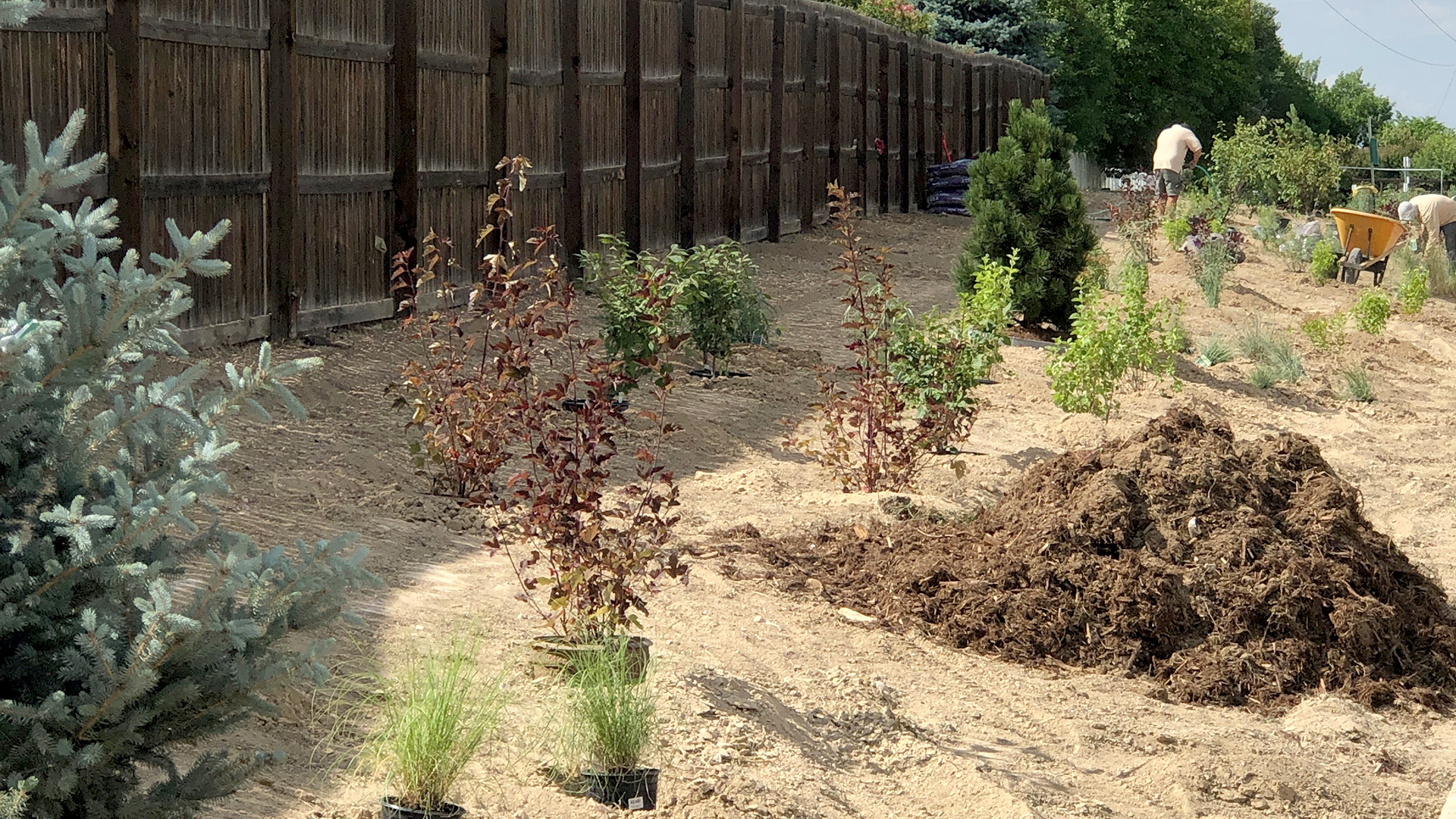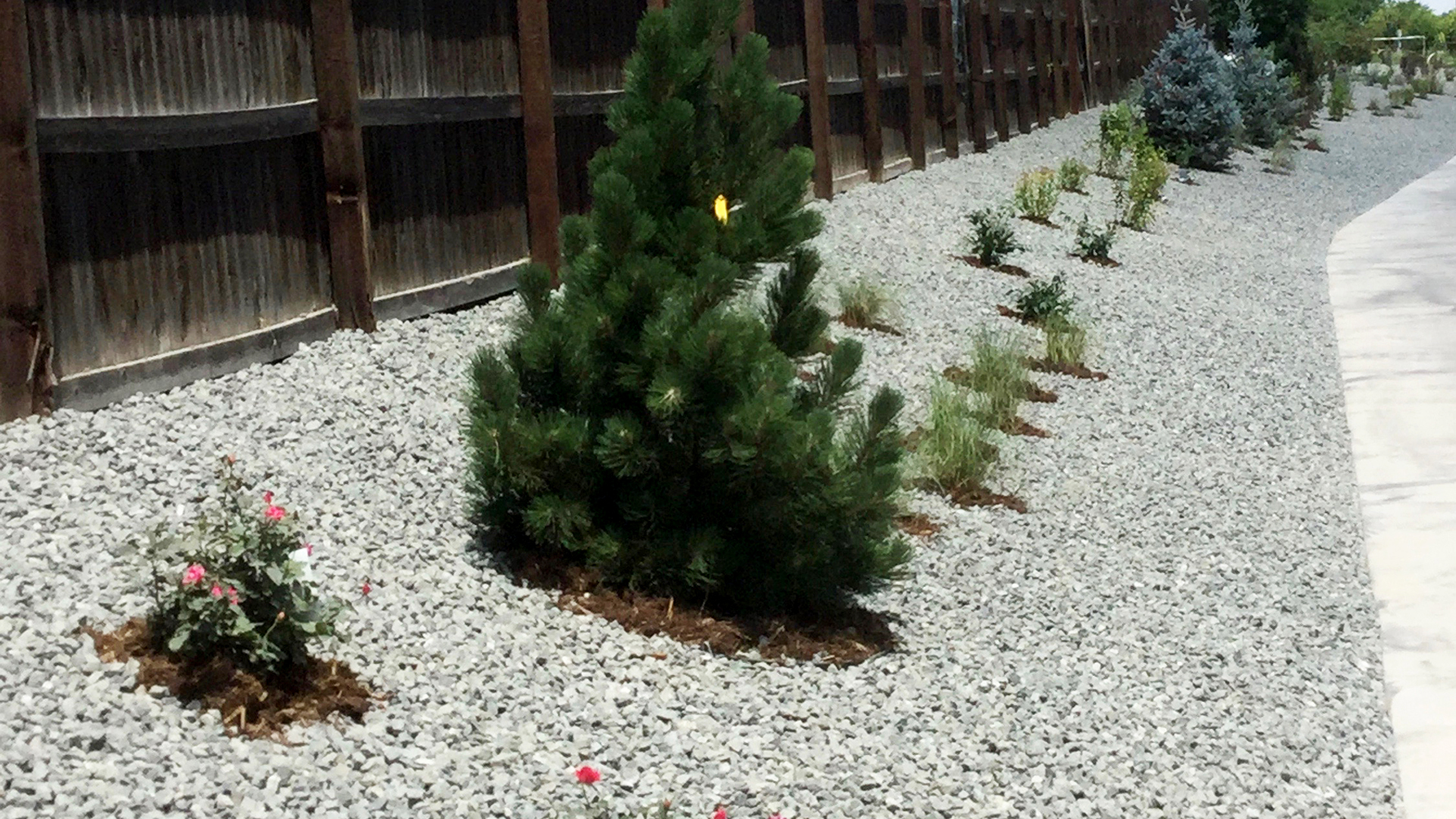Grants
Grant Program Supports Water Efficient Efforts
In 2018, Northern Water launched a Collaborative Water-Efficient Landscape Grant Program to promote water-efficient, Colorado climate-friendly landscapes that serve as regional demonstration and outreach efforts. Grants awarded provide financial support for commercial-scale landscape projects aimed at reducing water use while expanding ecosystem services. We also provide signs and other materials so the project can serve as a landscape efficiency education site.
Who can apply?
The program is open to new or redeveloping landscapes at public or private facilities, including cities, enterprises, non-profits, businesses, schools, multi-family complexes and HOA-managed landscapes. The facilities must be located within Northern Water’s boundaries. Utilize our maps to confirm that your project is located within our boundaries.
Grant Amounts
Project co-funding is 1:1 matching with the potential to receive a maximum amount of $25,000 per project. A limited number of grants will be awarded, at the sole discretion of Northern Water.
Impacts of the Water Efficient Landscape Grant Program Since Its Start

$1.1 million awarded since 2019

80 Projects

87 million gallons of water saved

8.2 million square-feet of landscapes
Grant Program Application Details
Timeline
- Required Consultations for Applicants: June-September 2025*
- Applications Accepted: Oct. 1-Dec. 1, 2025
- Applicants Notified: Late January 2026
- Contracts Signed/Projects Start: Spring 2026
- Project Completion Deadline: Sept. 30, 2026
Questions
If you have any questions about the grant program or application process, please contact Lyndsey Lucia.
*Note: Landscape consultations are fully booked for the 2025 season. If you would like to be added to our scheduling list for 2026, please complete the intake form.
Application Resources
The following documents are required as part of an application. There is a place to upload these files at the end of the application prior to the "Submit" button.
- Photos of property and project area
- Project design drawings and site map with dimensions
- Cost break-down, including total in-kind services and other funding
- Estimated water savings and 5 years of previous water-use data for the project site
- A five-year maintenance plan (irrigation maintenance, plant maintenance, etc.)
- Project approval from board or leadership and proof of communication with community or business equivalent
- Proof of required permits or documentation that those processes are underway
Additional documents are welcomed, but not required. For example, educational materials used to inform community members and other information relevant to our review panel.
Program Qualifications
- At least 1,000 square feet
- Designed to use substantially less water than traditional landscapes
- Designed to include at least 50 percent plant coverage when plants are mature in each planting area
Grant Program Details
- Grant payments will be made once the project is completed.
- This incentive program is not retroactive. Projects underway prior to approval are ineligible.
- Potential applicants are required to take part in a consultation at the project site with Northern Water staff prior to submitting an application.
- Grant recipients must sign a contract agreement with Northern Water prior to starting the project.
- The applicant is responsible for attaining the required permits from local entities and making sure the project is in compliance with all local ordinances.
- Implementation of the project is the sole responsibility of the applicant.
- Following completion, grant recipients and Northern Water must sign-off on a post-project checklist prior to receiving grant funds.
- Hard costs (plants and materials) plus contract and in-kind labor (at Northern Water’s discretion) can qualify for matching funds. Material costs per unit must not exceed manufacturer’s suggested retail price. In-kind labor (if applicable) must be documented and is to be valued at prevailing rates not to exceed $35 per hour.
- Recipients must keep all original receipts to verify grant qualifications have been met. Copies of itemized receipts are required for reimbursement processing. Contractor invoices must show an itemized materials list separate from labor.
- Incorporating third-party designations or certifications such as Audubon of the Rockies’ Habitat Hero, National Wildlife Federation’s Certified Wildlife Habitat, Audubon International and Xerces Society are encouraged. Consider becoming a Plant Select demonstration garden if applicable.
- Contractors supporting grant projects must be horticulturalists and/or certified through one of the following organizations: Irrigation Association (CIC, CID, CLIA, CLWM), Associated Landscape Contractors of Colorado (SLM), National Association of Landscape Professionals (CLT), (QWEL, RLA, PLA or SITES AP). Professionals can be found through the WaterSense “Find a Pro” tool or respective organizational websites.
Landscape Requirements
- Location: High-visibility locations will be given priority due to the educational component of this program, but all qualifying projects will be considered.
- Plants: Must have xeric to moderate water requirements and be appropriate to Northern Colorado’s climate. Please refer to our other resources. Invasive plants, artificial plants and turf are not allowed.
- 50 percent plant cover: To meet the 50 percent coverage requirement, plants at maturity will cover a minimum of 50 percent of each converted planting area. Plants outside the converted area are not considered in the calculation, even if they are adjacent to or over hang in the converted area. Established trees do not count toward the 50 percent plant cover.
- Hardscape: Impermeable surfaces, such as concrete, that do not allow water to penetrate into the ground, are not allowed as part of the conversion area. Permeable concrete or pavers are allowed, but the 50 percent plant cover rule still applies to the entire area.
- Mulch: Recipients must install a minimum of three inches of organic or inorganic mulch. However, this requirement may potentially vary depending on the landscape design and the plant palette that will be used.
- Fabric: It is preferred that projects NOT include fabric directly around plants and under wood and rock mulch smaller than a half-inch.
- Irrigation: Controllers and other irrigation equipment must be WaterSense-approved (WaterSense-approved models are now state law), be well-designed and may receive an irrigation audit. Drip irrigation is preferred. Preference will be given to projects that have been previously metered, so that water savings can be monitored. As the project is implemented, separate metering of the irrigation system is preferred, if possible.
Post-Project Reporting Requirements
Grant recipients will be required to submit monthly updates and photos while the project is underway, and then do so annually for five years once the project is complete. Online forms will be made available to complete these reporting requirements. To ensure water savings are achieved, the converted area must remain in compliance with the program terms and conditions for a period of five years following receipt of the grant payment.
Success Story
Northern Water has partnered with the Environmental Protection Agency (EPA) to look at specific case studies regarding homeowners' association water savings projects. This study reviewed the residential community of Harvest Gold Village in Loveland as it sought to improve the appearance of its landscape and reduce outdoor water waste utilizing funds from a Northern Water grant. By implementing the recommendations of an irrigation professional certified by a WaterSense labeled program and incorporating WaterSense labeled irrigation products, Harvest Gold saved more than $22,500 in water bills in the first year of the project.
Harvest Gold Case Study - EPA